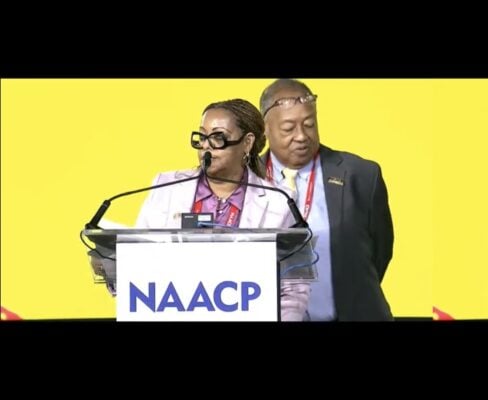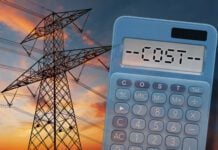When we talk about the future of technology, we often talk in terms of progress — faster computing, artificial intelligence (AI) breakthroughs and data at our fingertips.
But beneath this high-tech promise lies a dangerous truth: the rise of massive data centers is putting an unbearable burden on the very communities already facing the steepest environmental and economic challenges.
The NAACP recently took a strong stand. Delegates attending our national convention adopted a resolution that began with the Indiana State Conference to address the growing harm caused by data centers. These sprawling facilities, which power cloud computing and AI platforms like ChatGPT and Microsoft Copilot, may be invisible to most, but their impacts on Hoosiers are anything but.
Data centers consume massive amounts of energy and water. A single AI query can use four to five times more electricity than a typical internet search. Multiply that by millions of queries a day, and you can see the scale of demand. In Indiana and across the country, tech giants like Google, Meta and Amazon are racing to build these hyperscaler facilities, and our state policymakers are incentivizing them to come here with tax breaks galore.

The problem? They’re moving fast without transparency or accountability, and the financial fallout from soaring energy demand is going to land in the laps of Hoosiers who can least afford to pay more.
Not only are utilities scaling up to produce more energy, which will raise consumer rates by hundreds of dollars each year, they’re doubling down on dirty, expensive energy sources that will continue to pollute our state and harm public health.
Indiana Michigan Power is seeking to delay coal plant retirements and acquire out-of-state natural gas capacity. AES Indiana is proposing new gas generators that could double its carbon emissions, while Duke Energy plans to spend $3.3 billion on a massive new gas plant in the southern part of the state. NIPSCO also anticipates a major emissions increase to meet this new load.
State lawmakers have made it easier for utilities to keep coal online and build new fossil infrastructure, passing legislation that allows utilities to recover costs from Hoosiers even as they prioritize corporate tech giants over everyday families.
What’s happening in Indiana is just the beginning. States like Texas, Virginia and Louisiana are seeing similar buildouts, and with each new facility comes more demand for electricity, more fossil fuel emissions, more water usage and more strain on aging infrastructure.
We simply cannot ignore the pollution, displacement and rising utility costs being driven by unchecked data center expansion. Thankfully, there are policy solutions we can embrace that will protect Hoosiers.
The NAACP is calling for mandatory algorithmic impact assessments — modeled after environmental impact assessments — to ensure communities understand and can respond to the risks. We’re also asking for community benefits agreements that guarantee jobs, clean energy investments and protections for water and air.
We’re also calling on Congress and state lawmakers to require transparency from tech companies about their energy and water usage and to put guardrails in place that prevent utilities from offloading spiraling costs onto ratepayers.
There clearly are better, more sustainable ways to build data centers, but without rules in place to protect Hoosiers, industry will continue to take the path of least resistance — through our neighborhoods.
Indiana is leading the call for change. We’re not anti-technology. We’re pro-community, pro-transparency and pro-fairness. We want innovation that works for everyone — not just shareholders and executives in Silicon Valley.
The future of AI should not be built on the backs of those who are already carrying the heaviest burdens. Policymakers, utilities and tech companies need to slow down and listen to the communities that will bear the cost.
Denise Abdul-Rahman, BS, MBA, is the state chair of the Environmental and Climate Justice Committee and the CEO and founder of Black Sun Light Sustainability.




